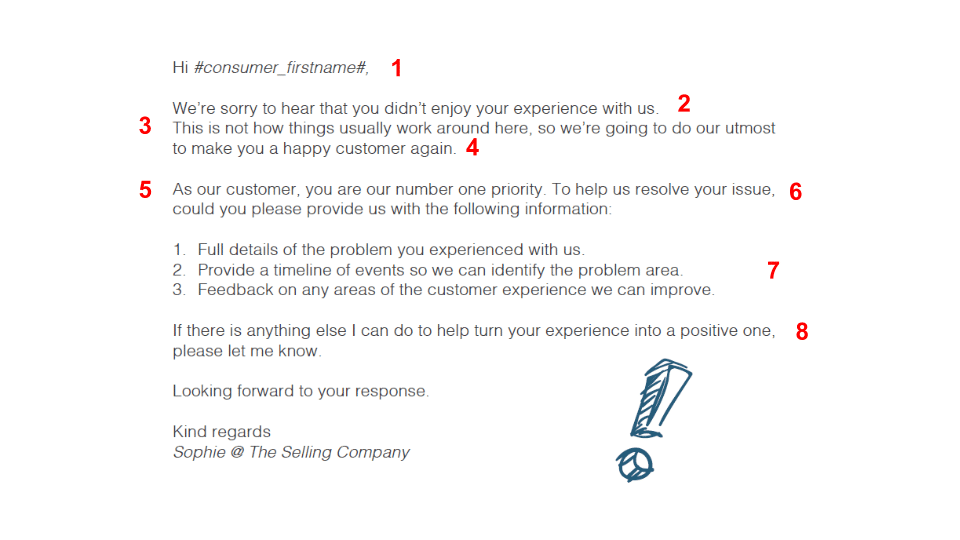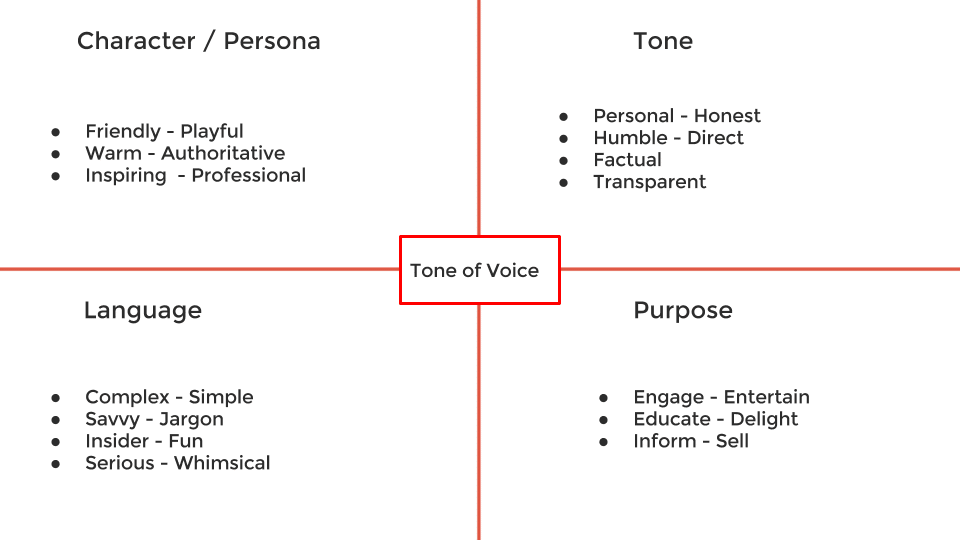The first rule of selling on marketplaces is: don’t ask for positive feedback — not directly anyway.
The upside of the rule is that Amazon and eBay both actively encourage online sellers to request feedback. Contrary to popular belief, customers don’t actually mind being asked for feedback, in fact most people are flattered when you ask for their opinion.
Research carried out by Scientific American, revealed that ‘a request for advice flatters the adviser and increases [their] self-confidence, which in turn boosts [their] positive perceptions of the advice seeker,’ increasing trust in the competence of the advice-seeker.
The language you use can be interpreted in many different ways, depending on the context. In order to encourage a positive score, you can use the language of persuasion to evoke positive emotion in your customer and increase your Amazon seller rating.
The formula for persuasion (and your Amazon Seller Rating)
In order to conquer the language of persuasion, you need to first learn how to establish trust with your customer. According to a study by Genesys, 40 percent of people wanted a better human experience when dealing with customer support. They wanted to feel that they were dealing with a company who cared about them.
Christine Comaford, an expert on the subject of persuasion, devised an equation that identifies the factors that are necessary to gain trust with other human beings. She outlined the ideas of safety, belonging, and esteem to add incredible value to how we communicate.
Safety + belonging + esteem = TRUST
The factors, outlined in the equation that would garner trust were safety, belonging and esteem. With the right language, you can tap into people’s emotional consciousness to drive them to a positive impression of your company. To inspire confidence in your customer, use a personable, positive and humble approach, whether you are redeeming your company name after a negative review, or requesting a high value Amazon seller rating.
Reverse Negative Feedback
Let’s follow this template step by step to discover how to turn a negative review into a positive.
- Personalize the request, using the customer name and your own name.
- Apologize.
- Confidence in your service inspires trust.
- Default to a positive tone — suggest happiness to the customer.
- Show the customer that you value them — ‘you are our number one priority’.
- Elevate the customer’s status by involving them in the resolution.
- Be concise and get to the point — format the message clearly.
- End on a positive note, avoid using negative language.
The value of an apology
Don’t fear the apology. If you have received a negative review, it is important to own up to your mistakes and recognize the value of an apology. Often a simple ‘sorry’ is the single most important result for a customer.
A recent study qualifies this idea, stating that 45 percent of people who received an apology for bad service, withdrew their evaluation in light of an apology. If you can reduce your negative feedback with one simple word, it’s definitely worth the effort.
A vote of confidence
Confidence inspires trust. In order to reverse a negative review, you can confidently but politely suggest that they will shop with your store again, ‘We’re going to do our utmost to make you a happy customer again’.
Step 1. Humanize the request
The more personable you are, the harder it is for someone to leave negative feedback. When you involve the customer in a personalized interaction, they will recognize you as a human and will be more likely to empathize with you and have the desire to help you succeed.
Inject your personality into the message, while maintaining the company tone of voice, use first names, show that you know a little bit about them and their order history.
When all you have is your vocabulary and punctuation to rely on in your feedback request, it is important that you spend time creating customized templates. When you have outlined the request, look at the message from the customer’s perspective and ask yourself how it makes you feel. Are you showing that you value them by conveying ideas of safety, belonging and by amplifying their status?
Empathizing with your customer in this way, will lead you and the language you choose in a positive direction.
Step 2. Default to a positive tone
Remove your ego. Default to happiness and positivity.
One easy way to rid yourself of your ego is to be empathetic, but another is to be welcoming to your customer. Simply recognizing each individual’s importance shows that you appreciate their feedback and custom.
Demonstrate that you value their time and opinion by telling them that their happiness is your priority.
Use positive language throughout in order to reverse a negative review. Default to a happy, positive tone. I recently received a string of emails from a company who were interested in my feedback. Although I had intended to leave a review, I hadn’t quite gotten around to it.
An aggressive approach reversed my interest in the company, plus the persistence was very off-putting. The agent used phrases like ‘overbearing’ (as she had sent me one email per day) and typed her greeting and my name in capital letters — almost shouting the message at my inbox. The choice of negative words and the aggressive tone, made me uncomfortable and the opportunity for great feedback was lost — not to mention I am now slightly afraid to shop with them again! Always remember to review the delivery of your message.
Avoid using the word negative in the response — The trick is to evoke positive emotions with your language. Reverse any bad feelings by using an optimistic tone — ‘If there is anything else I can do to help turn your experience into a positive one, please let me know’.
Identify your tone
To understand your company tone of voice, grab a pen and paper and outline the four boxes, as in the diagram below, for character, tone, language and purpose.
I have laid out some opposing adjectives to spark some ideas that you might use to define your tone. When you and your team identify with the company tone, it is a lot easier to speak confidently and you will be able to adjust your voice for different scenarios.
Step 3. Ask for help or advice
Flatter your customer and elevate their esteem.
Recognizing the other person’s importance and sharing the responsibility shows that you place value on their thoughts and opinions, and encourages them to engage in the relationship that you are trying to build with them.
A simple trick to transfer the power to the customer, and elevate their status is to ask for their help to grow your business with high Amazon seller ratings. The customer will feel invested in your success and that they have done their part in getting you to where you are.
By asking for help, you transfer the power to the customer, ‘To help us resolve your issue, could you please provide us with the following information.’
Promoting status is particularly effective when you want a person to change their attitude towards something. The idea is to focus their mind on a positive experience with your company and offering praise to elevates the customer’s status, shifting the power in their favor.
Step 4. Get to the point
Be clear and concise.
Clearly communicate the details of your request with clever formatting. Use bullets, bold sections and avoid chunky paragraphs. Show that you appreciate your customer, but don’t overload them with irrelevant information. Include links to seller ratings, feedback and attach any product resources that might entice them to throw in an extra star on your Amazon seller rating.
Anticipate your customer’s needs and exceed their expectations.
Choose your words. Avoid adjectives — descriptive words confuse the message. Singular action words get to the point and convey a clear message.
Win a 5-star Amazon seller rating
“When customers share their story, they’re not just sharing pain points. They’re actually teaching you how to make your product, service and business better.” Kristin Smaby, ‘Being Human is Good Business.’
Learn from your customer and act on any flaws in your service that they have highlighted. When you listen to your customer and show that you care about their opinion, they will feel they have an invested interest in your success and will happily leave a positive score. By humanizing the request for feedback and directing the interaction to a positive solution, you can seek out positive feedback without actually asking for it, and without fear of breaking the Amazon rules.
eDesk is the leading helpdesk for online sellers, purpose-built to address the precise demands of ecommerce. Sign up for a no-hassle, 14-day free trial right now and see for your yourself the difference it will make to your business.







